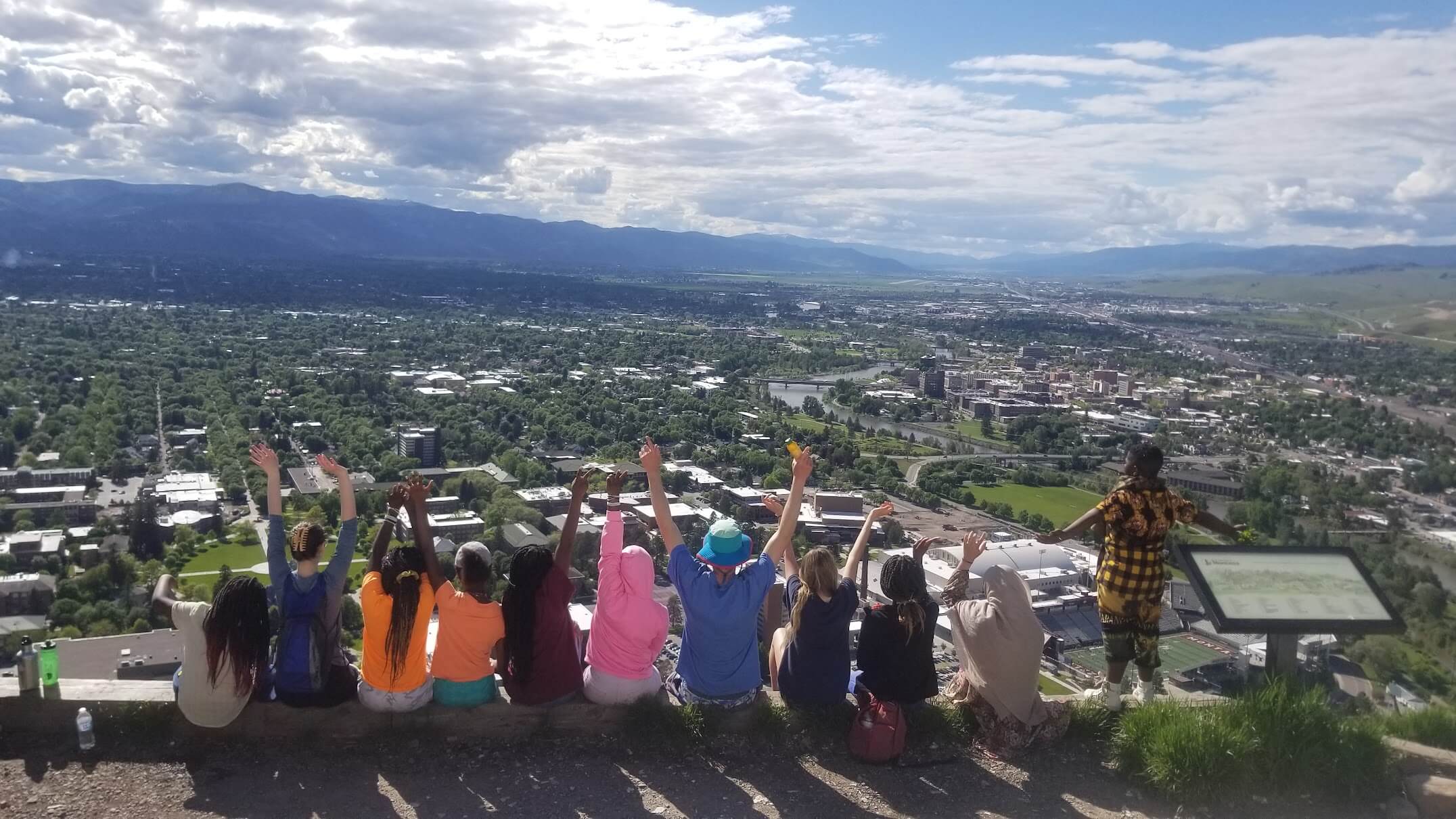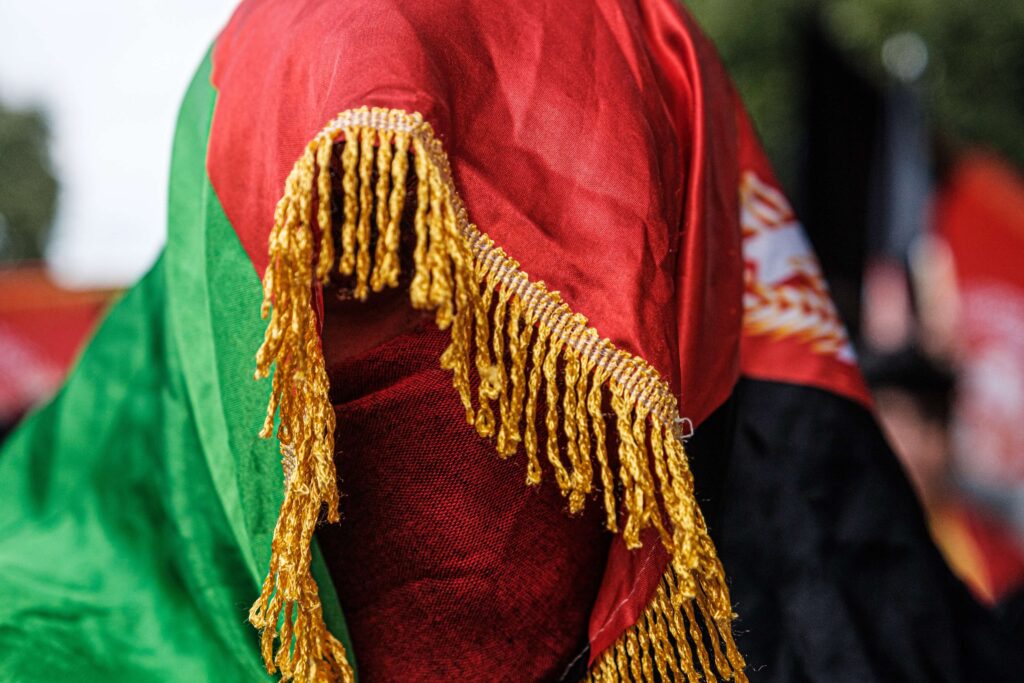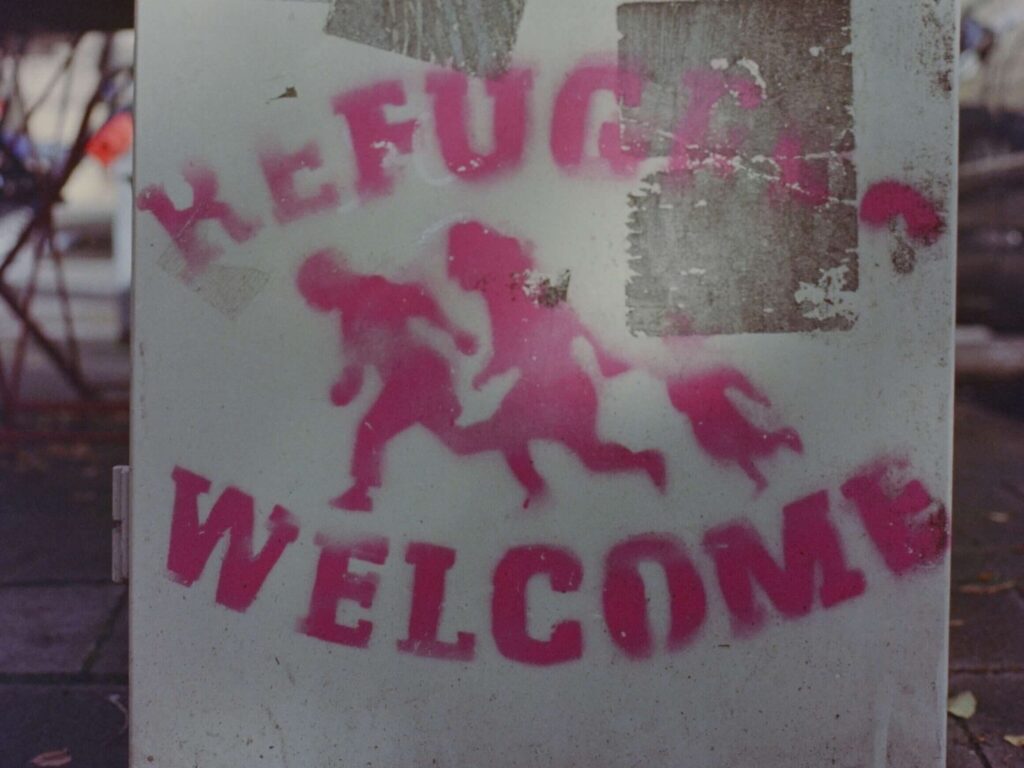
Other Immigration Pathways
There are many ways people can arrive in this country – and eventually to Missoula, and our doors are open to all of them. Beyond resettlement, these are some of the other most pertinent or timely pathways we’re seeing in our community right now, but it is far from a comprehensive list.
Afghan Humanitarian Parole

When Kabul fell in August 2021, tens of thousands of Afghan families were forced to leave their homes and their lives behind. Many had put their own wellbeing at risk by serving the United States military or government during our country’s war inside their borders. With their lives on the line and no time to go through the traditional refugee resettlement process, about 40 percent of these individuals were admitted to the United States under a special condition granted by the Department of Homeland Security called “humanitarian parole”.
They are only allowed to be in this country for two years before their status expires, and they are not automatically granted a pathway to citizenship as is the case with traditional resettlement, despite most meeting the qualifications to be classified as a refugee regardless.
Earlier in 2022, the federal government granted Afghan evacuees the right to remain legally in the United States for an additional two years. Though these individuals cannot safely return to their home country of Afghanistan, this temporary status still does not create any path to permanent residency. Many Afghans we work with at Soft Landing have murky, complicated legal efforts ahead of them as they must wade through an overburdened and under-resourced immigration system in order to remain in the United States.
Uniting for Ukraine

Russia’s unprovoked invasion of Ukraine in February 2022 forced at least 12 million people to flee, creating a widespread displacement crisis almost overnight. Roughly five million people crossed into neighboring European countries, according to the United Nations, while the remainder were displaced inside of Ukraine.
Though it’s believed that most Ukrainians will ultimately want to return home, the United States government has also created a pathway for those looking to come to this country. It is called “Uniting for Ukraine” and this program allows an individual or group to sponsor the arrival of Ukrainians who will be given temporary humanitarian parole status that permits the person or family to stay legally in the United States for two years.
Once a person or group applies to be a sponsor, they are then matched by the federal government with a Ukrainian seeking the opportunity to relocate. A sponsor is entirely responsible for the financial support and wellbeing of the Ukrainians they sponsor, including healthcare, housing, job placement, education and other related necessities that would otherwise be facilitated by a local refugee resettlement agency.
No Ukrainians have arrived in Missoula through this pathway, to date, but we do know there are multiple approved sponsors awaiting a match to welcome Ukrainians into our community.
Asylum

A person seeking asylum faces a fear of persecution or death that has forced them to leave their country of origin, similar to a refugee. However, asylum seekers apply for temporary protected status at a port of entry, such as the southern border crossing or once they have already arrived in the United States. A pending asylum application prevents a person from being deported, but there are limits on employment and applicants’ access to resources during that time. Once granted asylum, a person can apply for a green card after one year and citizenship after 5 years.
According to the Department of Homeland Security, 31,429 people were granted asylum status between October 2019 and October 2020, the most recent year for which there’s data available. However, the immigration court backlog is enormous – reaching 1.6 million cases at the start of 2022 – which means many people are waiting years for their asylum cases to be heard, living life in limbo in the interim.
Private Sponsorship and Welcome Corps
President Joe Biden’s administration launched a new program in 2023 designed to accelerate the resettlement process, which faces slow vetting times and serious backlogs, and give private community members the chance to participate in the act of welcoming.
Called Welcome Corps, five or more people can form sponsorship groups and agree to be the first point of contact for newly arriving refugees as well as responsible for core services for the first 90 days after a refugee arrives in the United States. These include securing and preparing initial housing; greeting families at the airport when they arrive; enrolling children in school; and helping adults find employment. Groups must raise a minimum of $2,375 for each refugee they sponsor, but the government recognizes that it might take more than that depending on where a sponsorship group lives to meet costs of living requirements.
Groups must include five citizens or lawful permanent residents over the age of 18.
Welcome Corps is a big responsibility, but there is a level of virtual support offered from the Welcome Corps team throughout this process. However, sponsor groups should be prepared to take on a lot of responsibility in order to ensure a dignified and smooth transition to life in the United States for refugee arrivals.
For now, sponsorship groups cannot identify refugees living overseas who they wish to support and sponsor. They will be matched with refugees who have already been approved for resettlement through the U.S. Refugee Admissions Program (USRAP). This is part of the program’s goal – to reduce the amount of time people have to spend waiting to be resettled in the United States, which can often be years.
Eventually, the government says it plans to expand the program so that private sponsors can identify a specific refugee individual or refugee family who they wish to sponsor, and refer them to be considered for resettlement by USRAP. However, there is no firm date about when this will be rolled out.
The Biden administration hopes that these relationships will blossom into friendship and community-building opportunities that far outlast that initial 90-day period.
Interested groups must apply to be sponsors on the Welcome Corps website. They will go through training and informational sessions as well as be subjected to a background check. For more information, go here.
Co-Sponsorship through the IRC
Harkening back to the days before the Refugee Act of 1980 standardized resettlement through resettlement agencies, co-sponsorship allows community groups to work in partnership with the International Rescue Committee (IRC) to welcome refugees. Individuals coming through the USRAP pipeline will be paired with groups in the United States, helping to increase the capacity of resettlement agencies and speed up the resettlement process. Here in Missoula, that will mean individuals coming through the resettlement process via the IRC Missoula.
The IRC Missoula is currently looking for interested co-sponsors. Groups must be between 6 and 10 people, and they must live in Missoula. Each group is expected to raise $5,000 to support the family, and up to $2,000 of that can be covered by in-kind donations such as furniture, household gifts, items, etc. The IRC asks that groups make a six-month commitment.
Responsibilities include providing certain core services such as finding housing, enrolling in public benefits, and helping with transportation. However, unlike private sponsorship through Welcome Corps, co-sponsors through the IRC will have significant local support from and access to the resettlement agency. The IRC will be responsible for all paperwork and case notes, and they will be in regular communication and offer training to help with the transition.
For more information on the Co-Sponsorship Program, visit the IRC’s website.
Welcome.Us and Welcome Connect
The government seeks to build off of its humanitarian parole program created for Afghans and Ukrainians. It created another immigration pathway supported by private sponsorship exclusively for people from Cuba, Haiti, Nicaragua, and Venezuela. However, this humanitarian parole status, when granted, is more limited, and it is the only way people from these countries are able to seek refuge in the United States, meaning they cannot apply for asylum if they cross the southern border without pre-authorized permission.
Through this pathway, Cubans, Haitians, Nicaraguans, and Venezuelans may be eligible for humanitarian parole – which provides temporary permission to be in the United States for two years but does not create any pathway to permanent residency or citizenship – but only if they are paired with a sponsor through the Welcome.US platform. Sponsors can apply through Welcome.US and Haitians, Cubans, Venezuelans, and Nicaraguans can apply through the CBP mobile app.
Sponsors must provide financial support to meet basic needs of new arrivals, including housing, healthcare, education and work authorization, but they should assume that they cannot receive support – financial or otherwise – from local resettlement agencies. Sponsors can be citizens, permanent residents, or any lawfully present individuals, including refugees who do not yet have their green card, people with temporary protected status, and diaspora community members. While sponsors can form groups, they are not required to do so.
Individuals from these four countries are able to apply for work authorization, but they are ineligible for a suite of public benefits made available to refugees and even other humanitarian parole recipients such as the Ukrainians and Afghans. For example, as of now, people from Cuba, Venezuela, Haiti, and Nicaragua who are granted humanitarian parole through this program are unlikely to be eligible for SNAP, Medicaid, or TANF.
Vocal critics of this program – of which there are many – say it violates the rights of individuals from Haiti, Nicaragua, Venezuela, and Cuba because they are no longer able to apply for asylum, and that it leaves many already vulnerable individuals without adequate support for essential needs.
To get more information on this pathway, check out the government’s FAQ document.

Welcome. Celebrate. Share.

